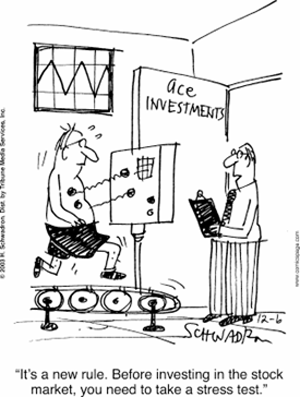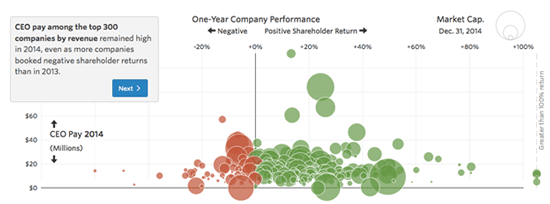Question: How do you get a $1 million portfolio?
Answer: Give $2 million to a stockbroker.
Don’t you hate phone solicitors?
Well, if you lived in western Washington during the 1980s, I may have very well interrupted your dinner with a “can’t miss” stock solicitation. I worked as a Merrill Lynch stockbroker in the 1980s, and we had mandatory work nights where everyone with less than five years of service cold-called everyone that lived in the best zip codes.

I made pretty good money as a stockbroker, but I didn’t like the business. There was intense pressure to push certain products, but that wasn’t all.
One of the greatest paradoxes of the investment industry was that the safest investments paid the lowest commissions while the riskiest investments paid the highest commissions.
Example #1: The commission on a CD was half of 1% while the commission for an illiquid oil/gas limited partnership was 8%.
I would have had to sell 16 times as many CDs to make as much as one of my dirt-bag co-workers who pushed little old ladies into oil & gas limited partnerships that locked up their money for six, seven, or eight years, or more.
Example #2: The commission on the sale of proprietary Merrill Lynch mutual funds was approximately 15% higher than on non-Merrill Lynch mutual funds.
Today’s commission payouts are different than they were in the 1980s, but that high-risk/high-commission paradox and the higher profits on proprietary products are still very much alive. And there’s no shortage of Wall Street dirt bags who are more interested in their paychecks than in your net worth.

I’m not talking about a couple of bad apples here. I’m talking about institutionalized greed that is woven into the DNA of people working on Wall Street.
Example: JPMorgan Chase & Company is currently in negotiations with the Securities and Exchange Commission (SEC) on whether it inappropriately steered private-banking clients to its own proprietary investment products—such as JPMorgan mutual funds—and away from those offered by other firms.
Why would a JPMorgan adviser push customers into JPMorgan’s own products? Because of higher fees to the firm and higher commissions to the broker.
Instead of recommending investments that are in the best interest of the client, advisers are still pushing investments that make themselves and their firm the most money.
I don’t mean to pick specifically on JPMorgan. The Office of the Comptroller of the Currency is currently investigating Bank of America and Wells Fargo for the same practices.
To be fair, the Wall Street crowd isn’t the only part of the investment food chain that is enriching itself at your expense.
CEOs, with the cooperation of rubber-stamp boards of directors, pay themselves massive amounts of money even if the shareholders lose their money.
Check out these CEOs, who were paid tens of millions in 2014 even through their investors lost money.

- General Electric: Jeff Immelt was paid $37.3 million while his shareholders lost 6.7%.
- Boeing: James McNerney, Jr. pocketed $28.9 million while Boeing stock fell 2.5%.
- IBM: Virginia Rometty cashed in $19.3 million even though IBM stock was down 12.4%.
- Viacom: Philippe Dauman was paid $44.3 million even though Viacom stock was down 6.6%.
- Loews: James Tisch received $10.5 million while his shareholders lost 12.4%.
What’s an investor to do?
Turn yourself into an informed, independent investor instead of a decision-dependent investor. That process starts with educating yourself.
To that end, here is my list of (free) investment websites that I religiously read.
Thoughts From the Frontline: John Mauldin’s weekly missive is the most widely read investment newsletter in the world for good reasons.
The Fiscal Times: The Business & Economy section is packed with big-picture interpretation of important global business news.
Evergreen Virtual Advisor: A once-a-week newsletter that concentrates on avoiding investment land mines.
Seeking Alpha: A compilation of hundreds of investment advisers analyzing the economic news of the day.
Forecasts & Trends: A heavy dose of (conservative) politics mixed with economics.
Value Walk: Some of the brightest minds that you’ve never heard of contribute insightful, news-driven articles.
The Hopewell Journal: I pay careful attention to Asian markets, and so should you.
Big Bear Cafe: Even if you are a bull, you should always be looking for signs of tough times.
I also subscribe to several paid services, but free is a very good price, and the above sites are great places to start.
Thanks to all that research, I recently discovered a great stock for my Yield Shark subscribers: a lithium producer that’s been doing everything right. Share price appreciation and dividend hikes combined, 15-year shareholders are sitting on a 503% return.

Tony Sagami
30-year market expert Tony Sagami leads the Yield Shark and Rational Bear advisories at Mauldin Economics. To learn more about Yield Shark and how it helps you maximize dividend income, click here. To learn more about Rational Bear and how you can use it to benefit from falling stocks and sectors, click here.

